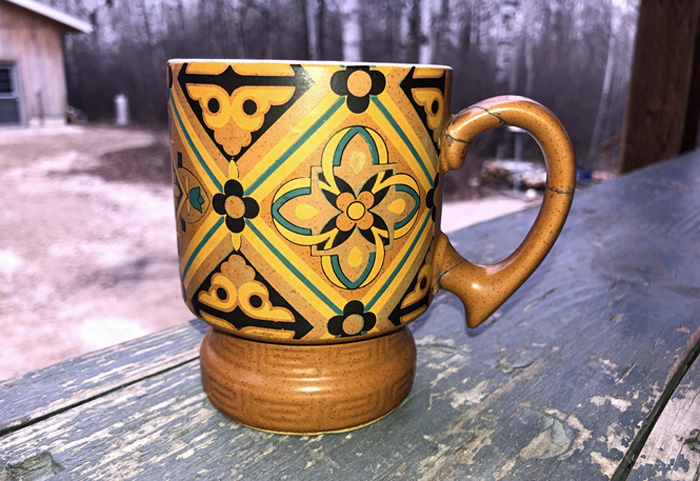I still have a mug that we had at our cottage when I was 10 years old. Back then, I considered it an ugly relic of the 70’s. Certainly nothing special. But when the cottage was sold, I’d grown so accustomed to it that it became part of my household set. Then a few years ago the handle broke, and it was time to make a choice – throw it out or fix it.
Wabi-sabi is a Japanese concept that embraces impermanence, imperfection and simplicity. The concept is expressed in such traditional Japanese art as Haiku poetry, or in finely made pottery that is deliberately misshapen, chipped or unfinished. The words wabi and sabi have no direct translation in English. Wabi has been roughly translated as “rustic simplicity, freshness, or quietness”. Think of the feeling of being alone in the woods or at the cottage. Sabi, on the other hand, refers to melancholic contemplation of the passage of time. It is the beauty of impermanence. It can be felt in the beauty of a well-used tool, or in a patched piece of clothing.
Together, wabi-sabi has a meaning that can’t be properly expressed in words. It’s a way of seeing the world for what it is, and not trying to enforce unchanging permanence and symmetry where it cannot naturally exist. Rather, observing wabi-sabi means embracing concepts such as simplicity, aging, death, and change – and learning to see the beauty in them. It also means cultivating a level of artisanship that elevates natural flaws and signs of decay, making them a philosophical reminder of the true nature of existence: “…nothing lasts, nothing is finished, and nothing is perfect.” (Richard Powell)
I glued my mug back together. It took a whole evening to do well, and the epoxy is dark grey, so the repair is quite visible. Today it’s my favourite mug for a few reasons. It reminds me of my childhood at the cottage; cutting grass in the summer sun, this old worthless mug sitting on the wooden deck – probably with warm cream soda and stray grass clippings in it. It also makes me contemplate how many fashions have come and gone since the generation that made it, and how old styles become new again. The repair was difficult and rewarding to accomplish. The fact that I can see my handiwork every time I use the mug gives me an immense sense of satisfaction. As it ages, and I with it, it will continue to deteriorate; a chip here, a stain there. Naturally, I’ll change too, until one day both of us will change into something altogether different. In the meantime, viewing the world through the centuries-old lens of wabi-sabi helps me to gain a sense of serenity, especially in these times of “unprecedented” change that we face today. Nothing lasts. Nothing is finished. Nothing is perfect.
If you’d like to learn more about wabi-sabi, I recommend the BBC documentary: In Search of Wabi Sabi, available online.




